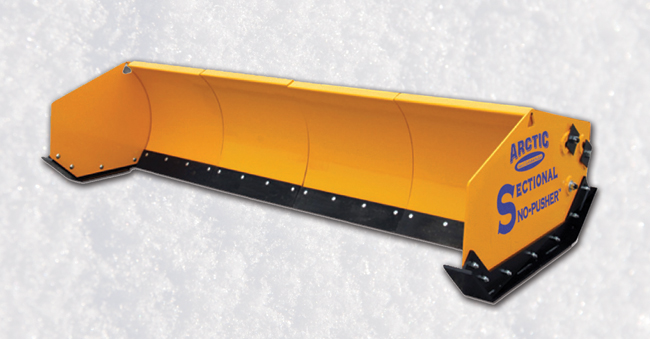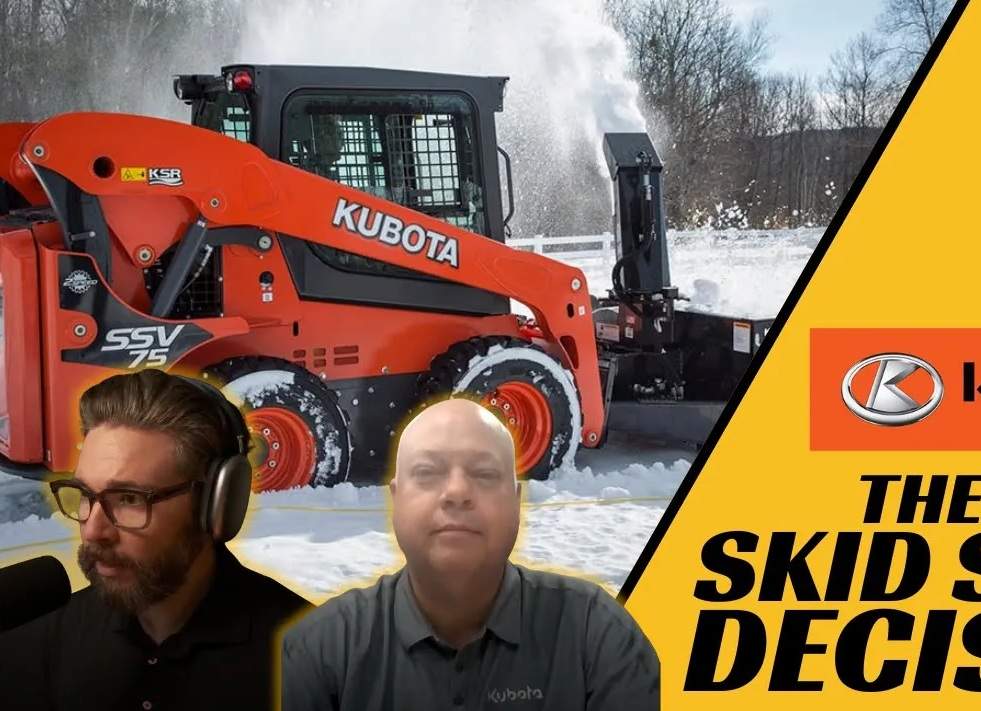Out of the Snow, Not Out of Mind
Whether in a commercial or residential setting, full-time or part-time usage, a containment snow pusher is a common attachment found on small equipment such as skid steers and tractors. When winter begins to wind down and the snow diminishes, most look forward to giving their pushers a well-deserved break. But before parking the winter workhorse, taking time for some post-season maintenance is a must.
Clean It Up
The first, and perhaps simplest, step in a solid post-season maintenance plan is giving the pusher a good cleaning. A thorough power wash removes salt and debris, preventing corrosion and rusting issues from cropping up during the off-season. After cleaning, allow the pusher to dry for a few hours, then apply a standard penetrant oil to pivot points, fasteners and nuts and bolts. Depending on the pusher, the cutting edge or edges, as well as the spring or springs, will need extra attention, as these areas are more prone to wear and rusting. Be sure penetrant oil is applied liberally to these areas.

Inspect, Repair and Replace
When the pusher is clean and dry, a thorough visual inspection should be conducted. All pushers have the same, standard areas to check, but there are differences depending on the model. Every pusher has a cutting edge, either rubber or steel, that should be inspected and replaced if necessary. Rubber edges tend to wear faster than steel, so there’s a higher likelihood of more frequent replacement needed on rubber-edge pushers. In fact, steel typically lasts five times longer than rubber. Regardless of what type, replacement does come at a cost. Sectional moldboard models alleviate both the time and expense of replacement. Rather than replacing a large, single cutting edge on a one-piece moldboard several feet wide, just the damaged section needs to be replaced.
Additionally, owners of sectional moldboard pushers should quickly inspect the mounting blocks. These blocks are designed to handle a lot of pressure and abuse, protecting both the operator and the tractor, or other carrier equipment. As a result, they will occasionally need a quick replacement. With proper operation and care on the part of the operator, mounting blocks can last five years or more.
All pushers have wear shoes that should be inspected at the season’s end and replaced if severely worn. Those who own pushers with a standard hitch design may find their shoes wear faster and unevenly, requiring more frequent replacement. However, newer “drop-and-go” hitch designs ensure even wear on both shoes for longer life and fewer replacements. These designs also permit the shoes to “float” rather than drag during operation, further extending life. Finally, be sure to inspect all areas for loose or missing parts. Tighten or replace any pins, nuts or bolts.
Simple Storage
Most owners lack the indoor space to store pushers, but it’s perfectly fine to keep them outside during the off-season. Again, be sure to spray penetrating oil onto rust-prone areas as an added safeguard. Though pushers are virtually low-maintenance in the off-season, it’s a good idea to inspect periodically — especially after a rainfall — to be sure rust isn’t rearing its ugly head. Post-season maintenance is the best way to extend the life of a snow pusher and guarantee years of reliable performance. Best of all, taking care of maintenance and repairs now will ensure the pusher is ready at the first sign of snow next year. The flurries can come at any time, so be ready to push through Old Man Winter’s first arrival.
Randy Strait is the president of Arctic Snow & Ice Control Products, based in Bradley, Ill.




